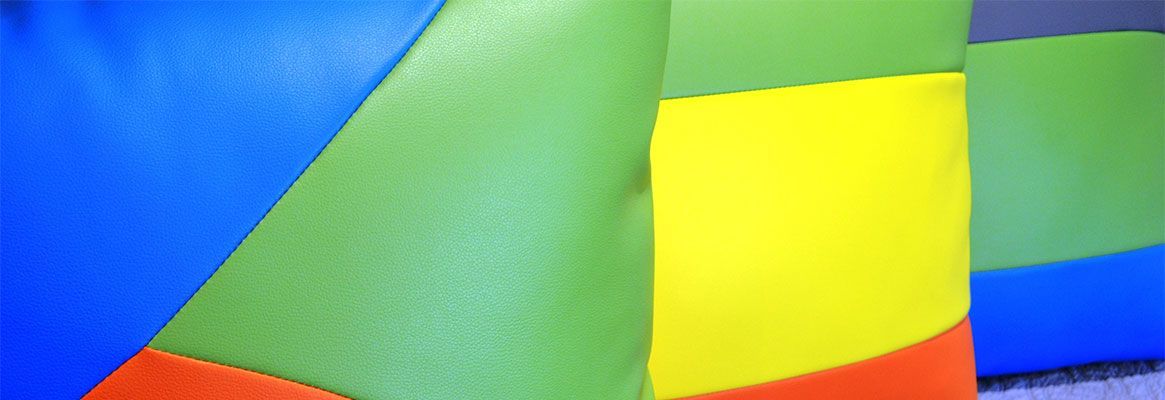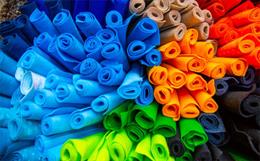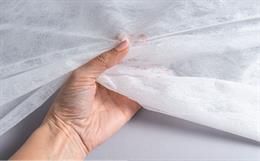Nonwovenbusinesses, in general, rely on high volume production which is highlyengineered and, because of competitive pressures, there is a constant need toinnovate to ensure high quality, in-specification products are produced at theminimum cost. The industry is driven by technology developments in machinery,process control and materials and, to have a sustainable future, nonwovensenterprises need to be at the forefront of these developments.
Whatis a nonwoven fabric?
Nonwovenfabrics are broadly defined as web structures bonded together by entanglingfibres mechanically, thermally fusing the fibres or chemically bonding thefibres. Nonwovens are defined more exactly by various bodies one of the mostoften quoted is the International Nonwovens & Disposables Association(INDA) definition: Nonwovens are a sheet, web, or bat of natural and/orman-made fibres or filaments, excluding paper, that have not been convertedinto yarns, and that are bonded to each other by any of several means.
Thevarious methods for bonding are:
Nonwovensare not made by weaving or knitting and do not require converting the fibres toyarn. Nonwoven fabrics are engineered fabrics that may be single-use disposableor a very durable fabric. They are used in numerous applications, including;baby diapers, adult incontinence products, wet wipes, surgical drapes andcovers, liquid cartridge and bag filters, face masks, air-conditioning filters,soil stabilizers and roadway underlayment, erosion control, drainage systems,insulation (fiberglass batting), pillows, cushions, and upholstery padding,carpet backing, automotive headliners and upholstery, house wraps, anddisposable clothing (foot coverings, coveralls).
Nonwovenmanufacturing process
Nonwovenmanufacturing can be described in simple terms as a series of manufacturingsteps consisting of forming a fibrous web, entangling or bonding the fibres inthe web to impart mechanical integrity to the structure andfinishing/converting the fabric to impart some special properties to the fabricthat the customer specifies. The manufacturing steps are described below:
WebFormation
Thecharacteristics of the fibrous web are a key determinant of the physicalproperties of the final product. The choice of methods for forming webs isdetermined by fibre length. Initially, the methods for the formation of websfrom staple-length fibres were based on the textile carding process, whereas webformation from short fibres was based on a wet laid process similar papermaking.These technologies are still in use, but methods based forming a web directlyfrom filaments immediately they exit an extruder (Spun laid) have also beendeveloped.
Fibrous webs have little mechanical strength and a further manufacturing process is necessary to form a fabric with useful properties. There are number of processes which are used to accomplish this as described in next section.
Web bonding
Needle punching is a process of bonding nonwoven web structures mechanically interlocking the fibers through the web. Barbed needles, mounted on a board, punch fibers into the web and then are withdrawn leaving fibers entangled. The needles are spaced in a non-aligned arrangement are designed to release the fiber as the needle board is withdrawn.
Stitch bonding is a method of consolidating fiber webs with knitting elements with or without yarn to interlock the fibers. There are a number of different yarns that can be used. Home furnishings are a market for these fabrics. Other uses are vacuum bags, geo-textiles, filtration and interlinings. In many applications stitch-bonded fabrics are taking the place of woven goods because they are faster to produce and, hence, the cost of production is considerably less.
Thermal bonding is the process of using heat to bond or stabilize a web structure that consists of a thermoplastic fiber. All part of the fibers act as thermal binders, thus eliminating the use of latex or resin binders. Thermal bonding is the leading method used by the cover stock industry for baby diapers. Polypropylene has been the most suitable fiber with a low melting point of approximately 165C. It is also soft to touch. The fiber web is passed between heated calendar rollers, where the web is bonded. In most cases point bonding by the use of embossed rolls is the most desired method, adding softness and flexibility to the fabric. Use of smooth rolls bonds the entire surface of the fabric increasing the strength, but reduces drape and softness.
Chemical bonding is the process of bonding a web by means of a chemical and is one of the most common methods of bonding. The chemical binder is applied to the web and is cured. The most commonly used binder is latex, because it is economical, easy to apply and very effective. Several methods are used to apply the binder and include saturation bonding, spray bonding, print bonding and foam bonding.
Hydro entanglement is a process of using fluid forces to lock the fibers together. This is achieved by fine water jets directed through the web, which is supported by a conveyor beit. Entanglement occurs when the water strikes the web and the fibers are deflected. The vigorous agitation within the web causes the fibers to become entangled.
Finishing and converting
Finishing and converting are the last operations performed on the fabric before it is delivered to the customer. Finishing includes operations such as coating and laminating, calendaring and embossing to impart particular surface properties, corona and plasma treatments to change the wetting properties of the fabric, wet chemical treatments to impart anti-stat" properties, anti-microbial properties, flame retardant properties etc. Aft finishing the fabric, it is usually cut to the width the customer specifies a rewound ready for shipment. This is known as converting.
Image Courtesy:
1. Indiamart.com
This article was originally published in the November issue of the New Cloth Market: the Complete Textile Magazine from Textile Technologists







